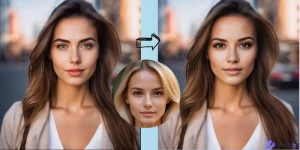Navigating the Legal Landscape
The explosive growth of face swap technology raises critical questions about the legal frameworks that should govern its use. Current laws regarding digital consent, image rights, and privacy vary significantly across different jurisdictions. In the United States, for instance, the use of someone's likeness without consent can lead to civil liabilities under right of publicity laws, which vary state by state. California, known for its stringent protections of celebrity images, requires explicit permission for commercial use of any individual's persona, whereas other states may have more lenient standards.
The Ethical Dilemma
Beyond the law, ethical considerations are paramount when deploying face swap technology. The potential for misuse is vast, including creating false representations of individuals in harmful or deceptive scenarios. A 2019 study from Stanford University indicated that altered videos could lead to serious consequences in misinformation, potentially influencing public opinion during critical events like elections. Ethical guidelines, therefore, are crucial to prevent harms related to deception, privacy breaches, and unwanted manipulations of personal images.
Protecting Personal Identity
Face swap applications can blur the lines between reality and fiction, posing significant risks to individual identity security. When people's faces are swapped into scenarios without their agreement, it can lead to identity confusion and misuse. Protecting a person's digital identity requires robust security measures and clear policies on consent and usage, ensuring that individuals retain control over where and how their faces are used.

Creative Rights and Ownership
Who owns the output of a face swapped image or video? This question becomes complex when the creations involve mixing multiple individuals' likenesses with artistic inputs from software developers. Intellectual property rights must be clearly defined to avoid disputes over ownership and profit-sharing. Artists and developers are advocating for clear regulations that delineate the boundaries of creative licenses and copyright in the context of face swapping.
Technological Limitations and Misrepresentations
While face swap technology offers remarkable capabilities, it also has limitations that affect its reliability and the authenticity of the generated images. Challenges in accurately capturing facial expressions and lighting can result in outputs that are less realistic or even disturbing. These limitations not only impact the quality of the results but can also lead to misinterpretations about individuals’ emotions or actions in swapped scenarios.
Future Directions and Regulations
As technology evolves, so too must the frameworks that regulate its application. Future regulations will likely need to address the rapidly advancing capabilities of face swap technology, ensuring that its benefits do not come at the expense of individual rights or societal norms. Lawmakers, technologists, and ethicists must work together to create balanced regulations that foster innovation while protecting individuals and the integrity of digital media.
For those interested in exploring the full spectrum of possibilities and limitations that face swap technology offers, a closer look at Face swap can provide deeper insights. Understanding these boundaries is essential for responsibly navigating the exciting yet challenging landscape of digital identity manipulation.
